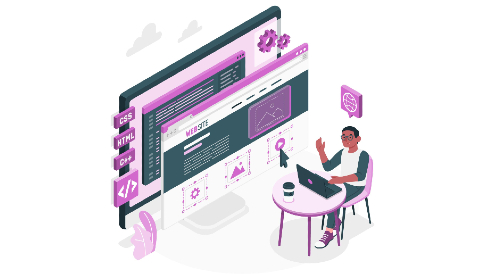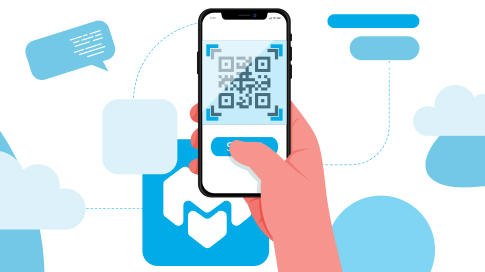Small Business Website Design: Tips for Improving User Experience
A well-designed website is crucial for small businesses in the current digital age to develop an online presence and interact with their target audience. Working with a specialized B2B web design agency can ensure that the site not only looks professional but also meets industry standards and customer expectations. A website with a positive user experience can significantly impact a small business’s success. In this blog, we will explore effective tips and strategies for improving user experience (UX) in small business website design. By implementing these techniques, small business owners can create websites that are engaging, intuitive, and drive conversions.
Clear and Intuitive Navigation
One of the fundamental aspects of a good user experience is clear and intuitive navigation. Users should be able to easily find the information they are looking for without confusion or frustration. Consider the following tips:
- Clear Menu Structure: Use a clear and concise menu structure that organizes content logically. Label menu items with descriptive and easily understandable terms.
- Navigation Placement: Place the navigation menu in a consistent and prominent location, such as the top of the page or sidebar. This ensures that users can easily access it from any page.
- Breadcrumb Navigation: Implement breadcrumb navigation to provide users with a clear path to their location within the website. Breadcrumbs enhance the navigation and make it easy for users to backtrack or navigate to higher-level pages.
- Search Functionality: Incorporate a search bar to allow users to search for specific information or products on the website quickly. Make sure the search function is visible and easily accessible.
Responsive Design for Mobile Devices
With the increasing use of mobile devices, it is crucial to ensure that small business websites are optimized for mobile viewing. Responsive design is a design approach that allows websites to adapt and provide an optimal user experience across different screen sizes and devices. Consider the following tips:
- Mobile-Friendly Layout: Design the website with a responsive layout that adjusts dynamically to different screen sizes. Ensure content is readable, buttons are easily tappable, and images are appropriately sized.
- Quick Loading Speed: Optimize the website’s loading speed for mobile devices by compressing images, minimizing code, and leveraging caching techniques. Slow-loading websites can lead to high bounce rates and a negative user experience.
- Mobile-Friendly Navigation: Simplify mobile device navigation using collapsible menus or hamburger menus. This conserves screen space and allows users to access the navigation easily.
- Touch-Friendly Elements: Ensure that buttons, links, and interactive elements are large enough and spaced appropriately to accommodate touch input on mobile devices. This improves usability and prevents accidental clicks.
Compelling and Engaging Content
Quality content plays a vital role in creating an engaging user experience. It provides valuable information, reflects the brand’s voice, and establishes credibility. Consider the following tips:
- Clear and Concise Messaging: Craft clear and concise headlines, subheadings, and body text that effectively communicate the brand’s message. Avoid jargon and use language that is easily understood by the target audience.
- Engaging Visuals: Incorporate high-quality images, videos, and graphics that enhance the website’s visual appeal. Visual content can capture users’ attention, convey information more effectively, and create a memorable experience.
- Compelling Calls-to-Action (CTAs): Use persuasive and action-oriented language in your CTAs to encourage users to take specific actions, such as signing up for a newsletter, making a purchase, or contacting the business. Ensure that CTAs are prominently displayed and easily identifiable.
- User-Generated Content: Encourage users to contribute content, such as reviews, testimonials, or user-generated photos. User-generated content adds authenticity to the website and helps build trust with potential customers.
Streamlined Forms and Conversion
Elements
Forms are essential for small business websites, whether for contact forms, sign-ups, or purchases. Optimizing forms and conversion elements can greatly improve the user experience and increase conversions. Consider the following tips:
- Simplified Form Fields: Minimize the number of form fields and only ask for essential information. Long and complex forms can overwhelm users and discourage them from completing the process.
- Clear Instructions: Provide clear and concise instructions within form fields to guide users on correctly filling them out. Use error messages to alert users of any mistakes and provide suggestions for correction.
- Progress Indicators: If a form is long or requires multiple steps, use progress indicators to show users how far they have progressed and how many steps are remaining. This helps users understand the process and reduces frustration.
- Secure and Trustworthy Payment Process: If your website involves online transactions, secure payment processing using trusted payment gateways and SSL encryption. Display trust badges or security certifications to assure users that their information is protected.
Fast Loading Speed
The speed at which a website loads is crucial to the user experience. Slow-loading websites can lead to high bounce rates and lower user satisfaction. Consider the following tips to optimize loading speed:
- Image Optimization: Compress and optimize images to reduce their file sizes without compromising quality. Use formats such as JPEG or PNG, and leverage lazy loading techniques to prioritize loading images as users scroll.
- Minimize Code: Reduce the size of CSS and JavaScript files by removing unnecessary characters, white spaces, and comments. Minify and combine these files to decrease loading time.
- Caching: Implement caching techniques to store certain website elements in users’ browsers, such as images and CSS files. This allows for faster loading times upon subsequent visits.
- Content Delivery Network (CDN): Utilize a CDN to distribute website files across multiple servers geographically. This ensures that users can access the website from a server that is closest to their location, reducing latency and improving loading speed.
Small Business Website Design – Conclusion
Improving user experience is crucial for small business websites to attract and retain customers. By implementing these tips for small business website design, such as clear navigation, responsive design, compelling content, streamlined forms, and fast loading speed, you can create a website that delivers an exceptional user experience. Remember to continuously monitor and analyze user behavior, gather feedback, and make iterative improvements based on user preferences and needs. Investing in user experience optimization will enhance customer satisfaction and contribute to increased conversions, higher engagement, and the overall success of your small business online.




Leave a Reply